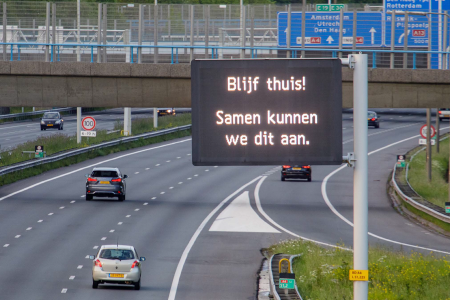In 2020, 610 people were killed in Dutch traffic and 19,700 people were seriously injured, of whom 6,500 had an injury severity of MAIS3+. This means that there were 51 road fatalities and 1,700 fewer seriously injured compared to 2019. The COVID-19 measures probably contributed to the lower casualty numbers. Nevertheless, the overall trend is still worrying: the number of road deaths has remained more or less at the same level for years and the numbers of serious road injuries have increased almost continuously in recent years. Additional investments and measures are needed to reverse the negative trend.
As in 2019, cyclists accounted for the largest share of the total number of casualties: 231 deaths (38%) and more than 13,000 seriously injured (68%). The number of road deaths among cyclists has shown a significant increase over the past ten years by an average of 2% per year. There were many casualties, especially among older cyclists. Car occupants accounted for 32% of road deaths.
By far, the most fatalities occur on 50 km/h roads within built-up areas (25%). 62% of road deaths were on municipal roads, 25% on provincial roads and 11% on national roads. Moreover, a large part of these fatalities fall on roads where driving speeds should be low (30, 50 and 60 km/h). Over the past ten years, the number of road deaths on roads with a speed limit of 30 and 60 km/h has increased.
With the casualty numbers of the past year, the national road safety targets for 2020 (a maximum of 500 road deaths and 10,600 serious road injuries) have definitively not been achieved.
COVID-19
The decrease in the number of injured in 2020 can probably be largely attributed to the COVID-19 crisis. The social distancing measures in the spring and in the last quarter of 2020 had consequences for the amount of traffic on the road, but also for the traffic composition, the travel locations and the travel times.
There were fewer road injuries in the periods of the corona measures than in the same periods in previous years. The speed limit change on motorways was also expected to contribute to increased safety: driving was reduced during the day and there were fewer passenger cars on the road. The number of road casualties decreased, especially on national roads.
Positive developments
- Money that the government has made available from 2019 has given an impulse to local infrastructural measures that have been proven to be effective.
- The use of devices in traffic, such as smartphones, has decreased – possibly under the influence of new legislation in 2019 and increased traffic stops in 2020. Cyclists more often rode with lights on in the dark. A small number of them wear bicycle helmets.
- The number of fines on registration number decreased. This mainly concerns speeding offences.
- Possibly fewer victims in 2021, the 2030 and 2050 forecast remains unfavourable
It is quite possible that the number of road deaths in 2021 will be lower than in 2020. But the predictions for the years 2030 and 2050 show that additional measures are needed to structurally reduce the number of road deaths to below 500 per year. For serious road injuries, an increasing trend will have to be reversed into a structural decline.
The 500 million euros that the Dutch government has made available in 2019 for the next 10 years will probably not be sufficient. Additional concrete measures are needed to achieve the targets of virtually zero road casualties:
- extra efforts for safer municipal roads, especially with a focus on a safer cycling infrastructure,
- extra efforts to achieve and maintain a sufficient level of traffic enforcement
- and efforts to use innovations to make traffic safer.

